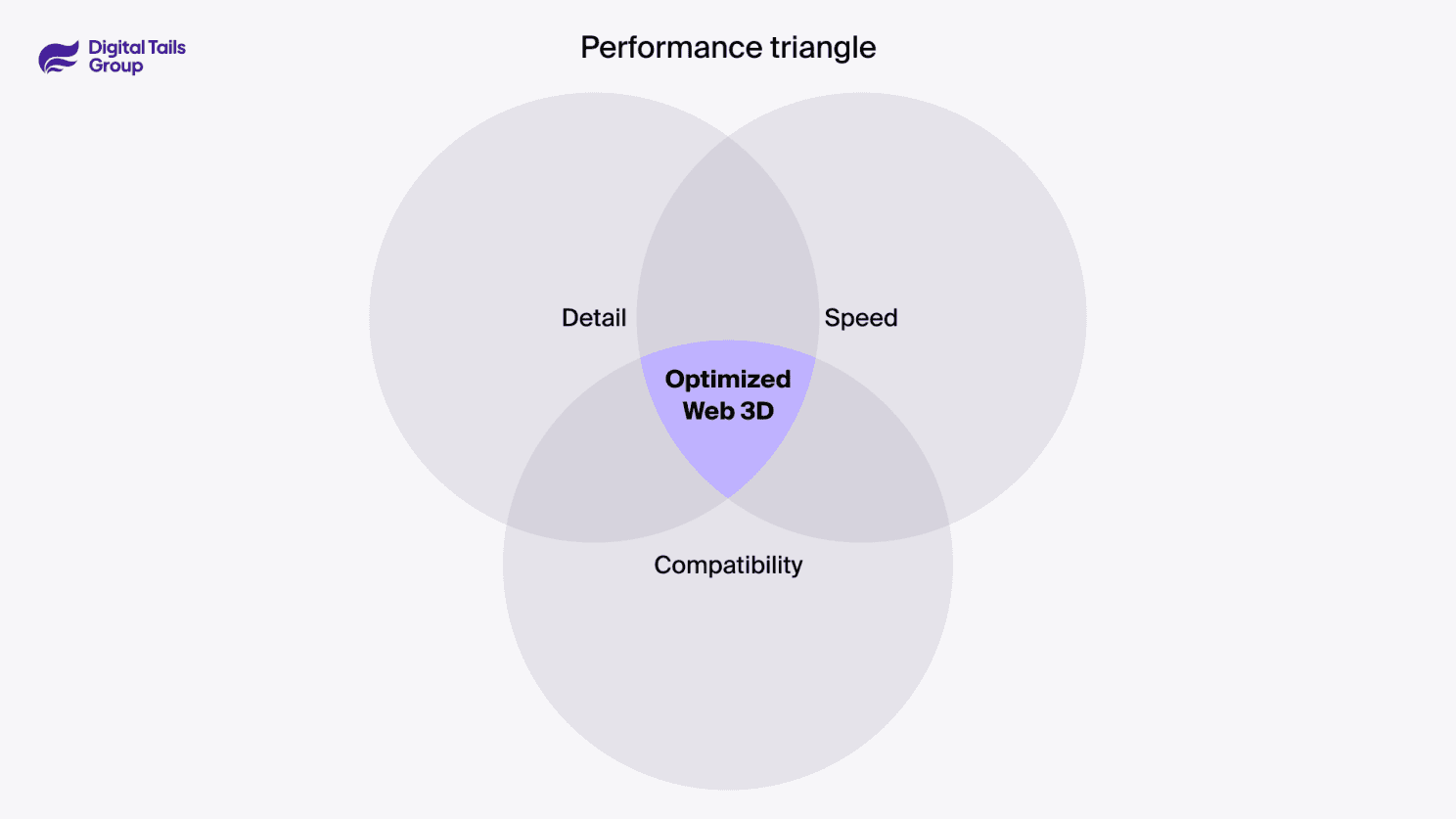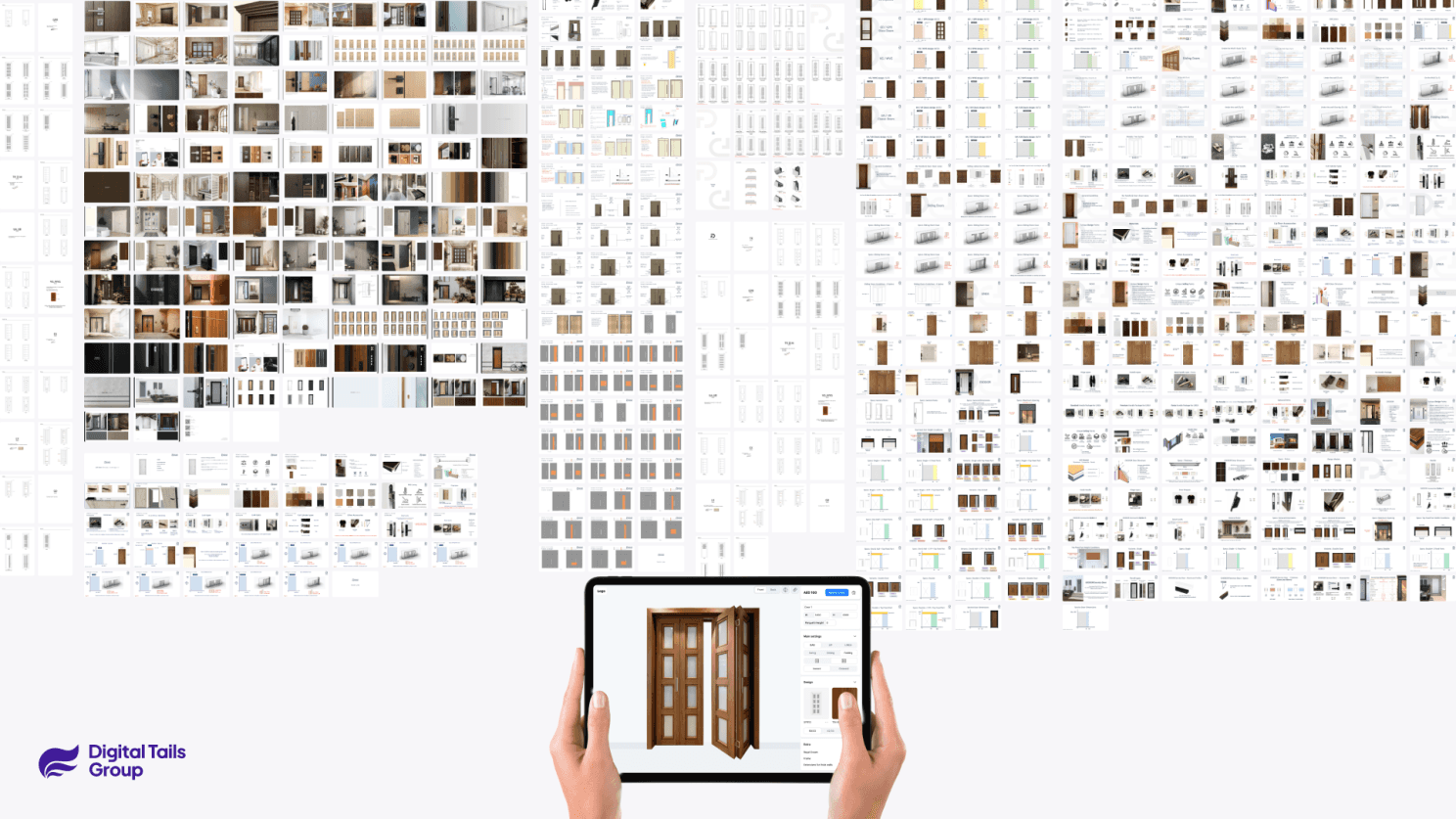Making Web 3D work: Practical answers to the most common concerns
Oct 24, 2025
Web 3D has become a go-to used as a working tool in business rather than a visual experiment. It runs directly in the browser, built on technologies such as WebGL, and allows products to be explored interactively – rotated, zoomed, and configured in real time. In retail, it gives customers clarity before purchase. In manufacturing, it connects directly to configuration, pricing, and production. The result is fewer errors, faster processes, and product data that can move smoothly through the entire chain, from presentation to delivery.
Questions about cost, performance, or compatibility often arise at the start, but these are technical challenges with established solutions. What remains is the value: Web 3D as a stable and scalable part of digital operations.

Common concerns with Web 3D
When companies first consider Web 3D, certain concerns tend to come up repeatedly. Each of these is valid, but with the right approach, they can be effectively managed . Below are the most common points we hear from clients, along with how we address them in practice.
Cost of implementation
3D is often seen as a high-cost investment compared to traditional imagery, but in reality, modular development, re-usable model libraries, and scalable hosting make implementation more affordable than many expect. Costs also tend to balance out through higher sales efficiency and reduced error rates.
Performance and stability
There is a fear that 3D will slow down a website or cause browsers to crash. Performance issues usually stem from poor optimization rather than the technology itself, but when the technology has lightweight geometry, there is texture compression, progressive rendering, and alternative assets, Web 3D runs smoothly even on mid- and low-range devices.
Device compatibility
Many assume Web 3D only works well on high-end computers, but modern frameworks are actually designed for cross-platform use. Experiences can adapt to the capabilities of each device, ensuring usability on desktop, tablet, mobile or smart POS (interactive screens).
Loading times and lags
Heavy 3D files raise concerns about long initial load times. Techniques such as optimization, lazy loading, streaming, and CDN distribution significantly reduce waiting times. Customers see a working model within seconds, with details loading progressively.
Scalability for large catalogs
Working with thousands of products or configurations can feel overwhelming, but with the right structure, Web 3D grows easily. A shared model library and automated pipelines handle variant baking, and parametric logic covers dimensional families. With serverless asset builds in place, new products or variations can be added smoothly as part of the regular workflow.
Integration with existing systems
Some businesses fear 3D will disrupt ERP, CRM, or eCommerce workflows. API-first development makes integration straightforward. Our 3D configurator can connect directly to quoting, pricing, and production systems without altering established processes.
Data security and IP protection
Sharing 3D models online raises concerns about design theft, but there are several protective measures that can significantly reduce risk. These include server-side handling of pricing and configuration rules, obfuscated or segmented glTF models, signed URLs, and watermark overlays rendered directly in the canvas. CAD files remain fully protected, as they never need to be published or exposed online.
User adoption and accessibility
There may be doubt whether customers will actually use 3D tools. When designed with intuitive interfaces and accessibility standards in mind, adoption rates are actually high. In practice, customers value the control and clarity that interactive 3D provides.
Future-proofing
Rapid change in web standards makes businesses cautious about long-term value. Web 3D is built on widely supported standards like WebGL, which ensures forward compatibility and reduces the risk of lock-in or obsolescence.

Our approach to solving the concerns
Our development philosophy is centered on scalability and efficiency. We avoid one-off builds by reusing component libraries, streamlining 3D asset creation, and applying modular development. It reduces costs while maintaining flexibility, but makes it possible to implement advanced 3D solutions without the overhead typically associated with enterprise software or media production.
Performance and accessibility are always addressed from the very start. Models are prepared specifically for the web, with simplified geometry, compressed textures, and rendering techniques that balance detail with speed. Progressive loading allows users to begin interacting almost immediately, while performance is kept consistent across regions and devices.
We design Web 3D as part of a connected ecosystem. Configurators integrate directly with ERP, CRM, and eCommerce platforms, keeping configuration, pricing, and production aligned. Security measures protect intellectual property, while reliance on open standards like WebGL ensures that solutions remain compatible and adaptable as technology evolves.
Takeaway
Web 3D has moved beyond the experimental stage and is proving its value in real business settings. The concerns that often delay adoption are understandable, but they can be addressed with the right technical and strategic approach. Companies that embrace Web 3D are finding not only smoother customer experiences but also more efficient, integrated operations.Web 3D is not a risk but an advantage, and can be used to create scalable digital systems that support growth.
Author: Petra Palusova - Chief Strategy Officer at Digital tails Group
